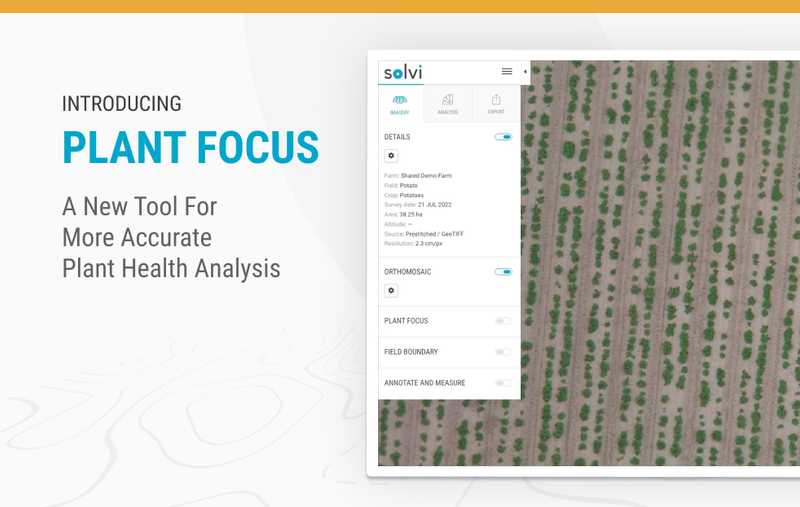
Plant Focus: a New Tool for More Accurate Plant Health Analysis
March 19, 2024
Drone imagery has become an essential tool for the assessment of crop health that is widely used by researchers and agronomists in field trials and crop production. It not only simplifies and speeds up crop scouting, but also provides more reliable and precise data, removing subjectivity from decision-making.
However, analyzing crop health isn’t without its challenges. In the early growth stages, when crops are just emerging, drone imagery often captures more soil than plants. This can skew plant health analysis, making it difficult to identify variations in the health of individual plants. As the crops mature, other vegetation like weeds or grass can interfere, especially in fruit orchards or vineyards.
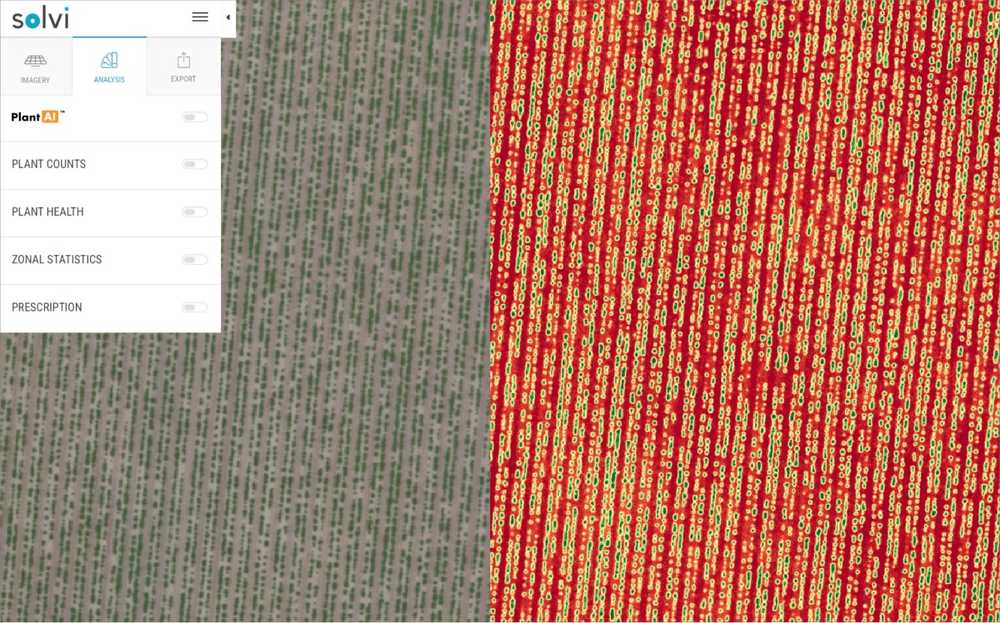
Introducing Plant Focus
To address these challenges, we are excited to introduce a new tool - Plant Focus. This feature allows users to exclude soil, weeds, stones, and unwanted elements from the analysis. It does this by creating a “Vegetation Mask” that hides what’s not needed and highlights what truly matters - the crops.
Creating Vegetation Masks is straightforward and can be done in two ways:
- Vegetation Index: Use any vegetation index, such as NDVI or VARI, in the early growth stages to distinguish crops from soil.
- PlantAI Detections: Utilize PlantAI detections to separate crops from other vegetation like weeds or grass between the rows
Once the Vegetation Mask is created, it’s automatically utilized by the Plant Health and Zonal Statistics tools to exclude everything that’s hidden from the analysis. This means that vegetation index maps and plot-level statistics for indices like NDVI, NDRI, VARI, etc. are now calculated solely for vegetation, effectively eliminating any skew from other objects.
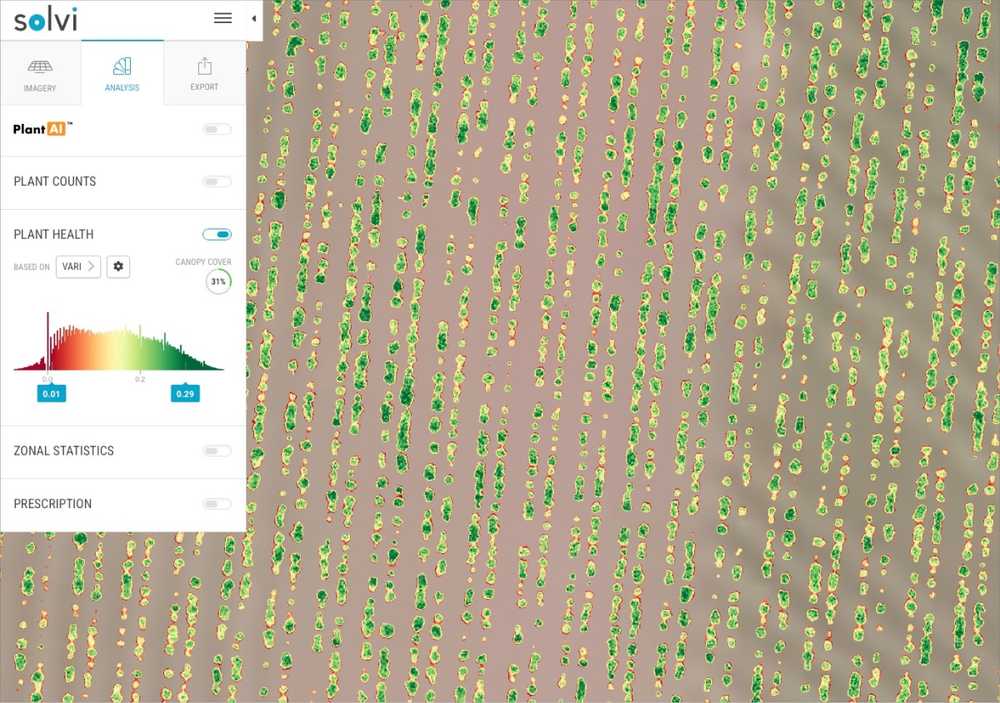
Additionally, the Vegetation Mask can be used to calculate Canopy Cover. The Plant Health tool will automatically calculate the Canopy Cover for the entire field, showing the percentage of the field covered by crops. Within the Zonal Statistics tool, Canopy Cover will be available among other metrics, showing the percentage of each plot covered by crops.
Now, let’s explore how the tool works.
Using Plant Focus in Early Growth Stages
The easiest way to create a Vegetation Mask is to use one of the vegetation indices like VARI (for RGB imagery) or NDVI (for multispectral). This method is particularly effective in the early growth stages, or when the field doesn’t have much other vegetation.
All you need to do is select one of the vegetation indices (there are more options available for multispectral imagery) and set a threshold that effectively distinguishes crops from everything else. With just one click, the tool will create a mask, hiding everything that isn’t relevant to your analysis.
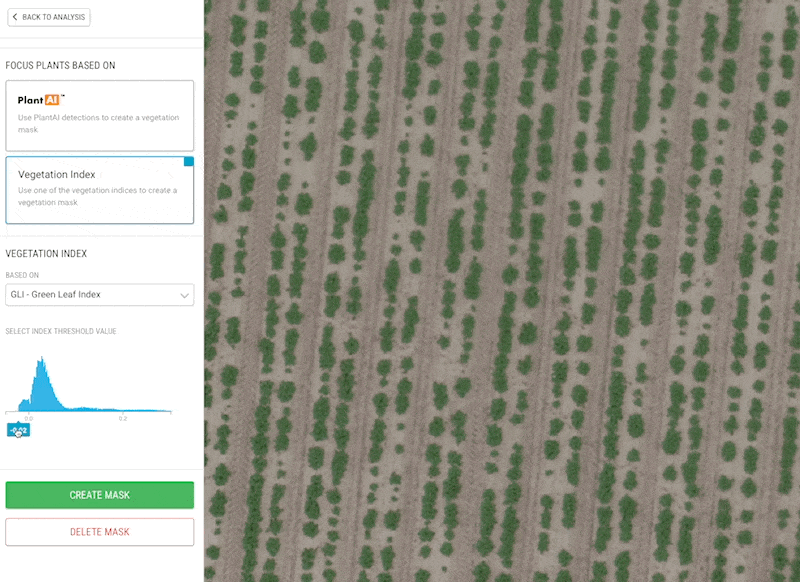
Made a mistake on the first try or want to disable Plant Focus and analyze all field data? No problem - you can easily adjust the threshold in the tool’s settings. If you want to revert to the initial state, simply toggle the tool off.
Plant Focus in Speciality Crops
There are instances where creating a Vegetation Mask can be more challenging. For example, when weeds cover large parts of the field, or in orchards and vineyards where grass grows between the rows, the vegetation can interfere with the analysis.
This is where the PlantAI tool comes into play. Leveraging machine learning technology, PlantAI doesn’t just use color, but also visual patterns in the imagery. This allows it to accurately identify plants, even amidst other green vegetation.
Creating a Vegetation Mask using PlantAI detections involves a few steps. First, create a detection with a “polygon output” in the PlantAI tool. Once that’s done, the detection becomes available for use with Plant Focus. Simply select it, and the Vegetation Mask will hide everything outside of the shapes that identify the plants. This allows for a more focused and accurate analysis.
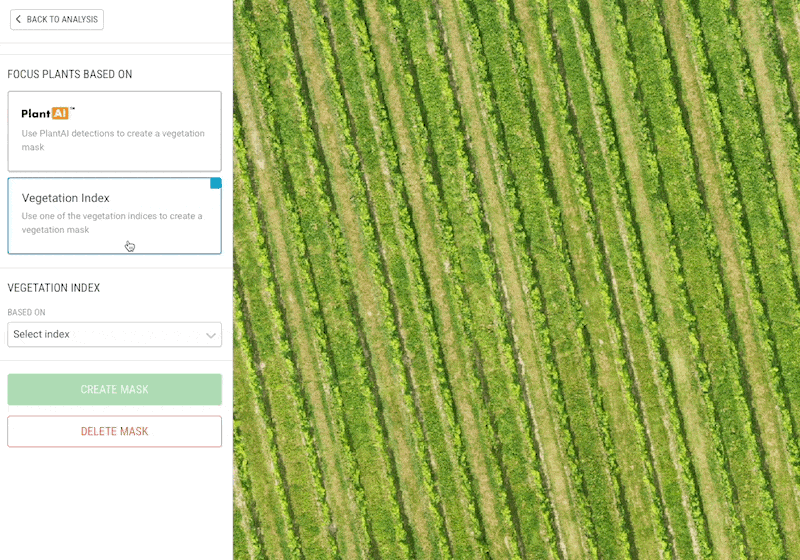
Seamless Integration with Plant Health and Zonal Statistics
Once the Vegetation Mask is created and the Plant Focus tool is activated, it’s ready to be used in conjunction with other analytics tools.
In the Plant Health tool, both the map colors and histogram data will automatically update to reflect data based solely on the crops. If you want to use a different vegetation index, it’s as simple as switching to it. The index will be recalculated, taking the Vegetation Mask into account.
Within the Zonal Statistics tool, you just need to recalculate the statistics. The updated metrics for vegetation indices and raw reflectance values will only represent data not hidden by the Plant Focus tool. If you want to revert the metrics to their original state, simply deactivate the Plant Focus tool and recalculate the statistics. In addition, the Canopy Cover metric will show the percentage of plots covered by vegetation.
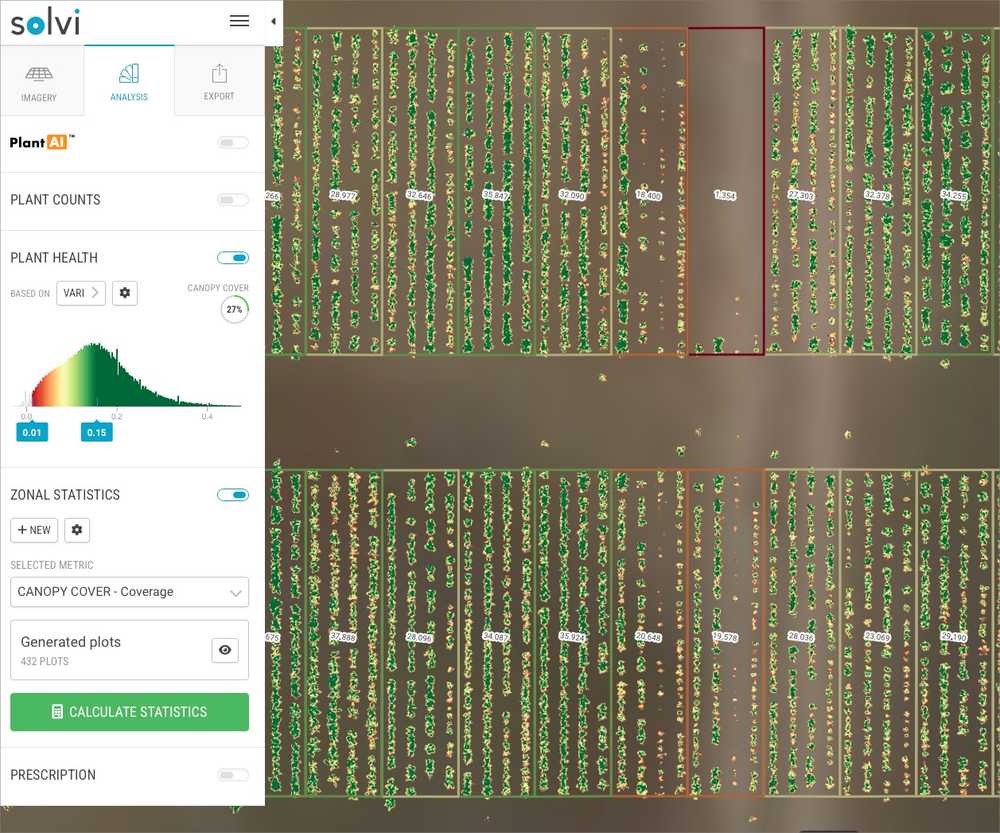
Plant Focus Opens Up New Possibilities
The power and flexibility of the PlantAI tool open up a world of new possibilities and use cases. For instance, researchers evaluating the effectiveness of various crop protection products may be interested in determining the percentage of trial plots covered by weeds. With the ability to fine-tune the PlantAI tool to detect not just plants, but also weeds, researchers can achieve this in a few simple steps:
- Use the PlantAI tool to detect weeds.
- Create a Vegetation Mask with Plant Focus using the weed detections.
- Calculate Canopy Cover, which in this context, will represent the percentage of plots covered by weeds.
Give It a Try Today
We’ve put a lot of work effort into the all-new Plant Focus tool, and we’re thrilled to make it available to all our users. We eagerly await your feedback and are excited to learn about the diverse use cases that this tool will facilitate!
Plant Focus is accessible to customers on all our subscription plans, as well as those on the Pay as You Go tier. If you’re not yet a Solvi user, you can sign up for a free trial and experience the benefits of Plant Focus firsthand.
